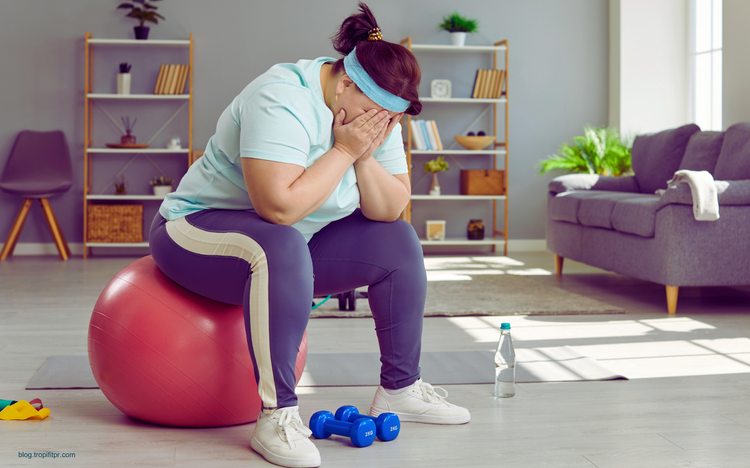Effortless Shopping Guide

Create the perfect grocery shopping list, choose nutritious foods, and avoid the #1 food-label trap.
Grocery shopping can leave people frustrated and overwhelmed because supermarkets influence buying habits using behavior design psychology, often driving ultra-processed foods.
If you enter a store without a plan, the shopping cart can quickly fill with unhealthy, convenience foods.
Discover easy steps in this guide that ensure you leave the grocery store guilt-free, happier, and with the right foods to support a healthy diet.
Step 1 Create a shopping list
Studies have shown that a grocery list decreases impulse buying, leading to improved weight control and healthier food choices, prioritizing nutritious food.
To get started:
- Make a list of all your cooking staples, most of which you won't have to buy every week.
- Keep the staple list in a notes app or stuck to the fridge.
- Copy the list each week and remove anything you don't need that week.
- Plan your weekly meals.
- Choose several recipes for the week that fit your eating plan and add all the ingredients to the same list as the staples.
- Create different grocery lists for specific stores.

Step 2 Shop the edge of the grocery store first
You'll find fresh fruits, vegetables, proteins, and other perishables on the outer perimeters of the grocery stores.
Before entering the aisles, shopping for those foods will help you make healthier choices and keep you focused.
Avoid making the mistake of evading aisle shopping altogether.
You'll find healthy nuts, seeds, whole grain, and frozen foods throughout the aisles.
You'll remain focused and on track if you have a grocery list and cart full of nutritious foods from the outer edge.

Step 3 Avoid cartoons
Cartoons on food packaging do two things:
- It targets kids to attract lifelong product fans.
- It targets adult nostalgia, which overrides common sense.
Avoid foods with cartoons on the label. If you don't want to eat junk food, don't have cartoon packaged products in the house.

Step 4 Five ingredient rule
Forget packaged foods containing more than five ingredients. The more ingredients, the more ultra-processed it probably is. It likely contains artificial ingredients you can't pronounce, with little to no nutritional benefit.
However, be aware that savvy product marketers know this rule and list some products as "only five ingredients."
But five artificial ingredients are still artificial ingredients to avoid.

The #1 food label trap
Research proves that adding health claims to food packaging makes people believe a product is healthier than it is. For example, 3kg organic certified, gluten-free, plant-based essential sugar is still a bag of sugar.
Here's another example, in the 1920s, the breakfast of America was a small coffee, maybe a bread roll, and orange juice. The US's biggest bacon producer was struggling at this time, so they contacted Sigmund Freud's nephew, Edward Bernays — an American pioneer in public relations and propaganda.
Bernays reached out to 5,000 physicians and asked them if a more extensive breakfast was beneficial. Most agreed (4,500) that a more significant breakfast provided more energy and was good for the health of the American people instead of a small breakfast. Bernays arranged for this letter to be published nationwide. He encouraged articles stating that bacon and eggs should be a central part of a bigger, healthier breakfast. As a result, bacon sales increased exponentially, becoming a staple "breakfast" food.
Manufacturers often use health claims that are misleading to affect consumer choices. Bare that in mind when grocery shopping.
The bottom line
Most grocery stores encourage unhealthy eating through impulse buying of ultra-processed foods. Create a plan and prepare before grocery shopping to keep you focused, healthy, and happy.
Use this quick action list to keep on track:
Reference & further reading
- Hughes C, Wellard L, Lin J, Suen KL, Chapman K. Regulating health claims on food labels using nutrient profiling: what will the proposed standard mean in the Australian supermarket? Public Health Nutr. 2013 Dec;16(12):2154-61. doi: 10.1017/S136898001200540X. Epub 2013 Jan 11. PMID: 23308399.
- Helfer P, Shultz TR. The effects of nutrition labeling on consumer food choice: a psychological experiment and computational model. Ann N Y Acad Sci. 2014 Dec;1331:174-185. doi: 10.1111/nyas.12461. Epub 2014 Jun 9. PMID: 24913496.
- Campos S, Doxey J, Hammond D. Nutrition labels on pre-packaged foods: a systematic review. Public Health Nutr. 2011 Aug;14(8):1496-506. doi: 10.1017/S1368980010003290. Epub 2011 Jan 18. PMID: 21241532.
- Hawley KL, Roberto CA, Bragg MA, Liu PJ, Schwartz MB, Brownell KD. The science on front-of-package food labels. Public Health Nutr. 2013 Mar;16(3):430-9. doi: 10.1017/S1368980012000754. Epub 2012 Mar 22. PMID: 22440538.
- Jahns L, Scheett AJ, Johnson LK, Krebs-Smith SM, Payne CR, Whigham LD, Hoverson BS, Kranz S. Diet Quality of Items Advertised in Supermarket Sales Circulars Compared to Diets of the US Population, as Assessed by the Healthy Eating Index-2010. J Acad Nutr Diet. 2016 Jan;116(1):115-122.e1. doi: 10.1016/j.jand.2015.09.016. Epub 2015 Oct 23. Erratum in: J Acad Nutr Diet. J Acad Nutr Diet. 2016 Jan;116(1):170. PMID: 26508588.
- Grigsby-Duffy L, Schultz S, Orellana L, et al. The Healthiness of Food and Beverages on Price Promotion at Promotional Displays: A Cross-Sectional Audit of Australian Supermarkets. Int J Environ Res Public Health. 2020;17(23):9026. Published 2020 Dec 3. doi:10.3390/ijerph17239026
- Ravensbergen EA, Waterlander WE, Kroeze W, Steenhuis IH. Healthy or Unhealthy on Sale? A cross-sectional study on the proportion of healthy and unhealthy foods promoted through flyer advertising by supermarkets in the Netherlands. BMC Public Health. 2015;15:470. Published 2015 May 6. doi:10.1186/s12889-015-1748-8
- Thorndike AN, Sunstein CR. Obesity Prevention in the Supermarket-Choice Architecture and the Supplemental Nutrition Assistance Program. Am J Public Health. 2017;107(10):1582-1583. doi:10.2105/AJPH.2017.303991




